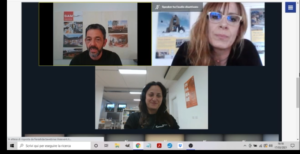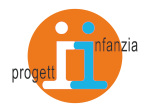 On Wednesday 17 March, within the Didacta Italia 2021 Fair, the pedagogist Tania Bertacchi of the Pedagogical Coordination of Bassa Reggiana supported a dialogue together with the architect Giovanni Fumagalli, thanks to Gonzaga Arredi and CampuStore, who hosted the initiative.
On Wednesday 17 March, within the Didacta Italia 2021 Fair, the pedagogist Tania Bertacchi of the Pedagogical Coordination of Bassa Reggiana supported a dialogue together with the architect Giovanni Fumagalli, thanks to Gonzaga Arredi and CampuStore, who hosted the initiative.
In the obstacle course faced by everyone in the last year in which a global pandemic had to be faced, between smartworking and DDA, technologies, access and knowledge to digital tools has become an aspect of enormous interest from the point of view educational. A sensitivity that also occurs in early childhood education, in an age group in which experiences shape (metaphorically and physically) the brains and learning of children and in which it is therefore essential to correctly introduce simple and less simple technologies. in the educational horizon of the infant toddler centers and preschools.
"Since from the infant toddler center, the educational experience that girls and boys face is important for building the society of tomorrow, and the approach in infant-toddler centers and preschools in the Bassa Reggiana looks to innovation and research in the educational field in this perspective. of the future. An extensive work that, together with the pedagogical team, six professionals in charge of overseeing the educational quality, involves all the educational staff. "
The point of view of an architect certainly starts from the conception of space and in particular in Guastalla, where the Iride infant toddler center is located, which has long been considered one of the most beautiful school buildings for early childhood.
"The relationship between space and architecture is fundamental in the educational field, even to be considered the third educator, even if it is certainly not the only relevant element. It does not represent only a container, but it is the bearer of a content. Every aspect of the educational approach, reflecting the reference philosophy, must promote the wealth of possibilities and materials, the flexibility that lends itself to uses and languages, the variability capable of supporting inquiries and curiosity. It is in these educational contexts that girls and boys develop learning, but also grow as people, as a whole, in a holistic approach that takes into consideration all the components of personal development together.
And it is in this key of interpretation that contemporaneity is welcomed in our infant-toddler centers and preschools, paying attention to the process, and not to the final result, declining technology with our way of teaching school, always understood as a language through which to develop relationships. and experimentation.
There are simple technologies that have inhabited our nurseries and schools for many years.
The light table is used from an early age, used with the whole body to give life to real "magical" plans.
The overhead projector is often used for its different light modes and to investigate the visual effects created, but also aspects more related to identity and physicality (the presence / absence of shadows).
Even the camera can become an unusual tool, when in the hands of the children themselves it becomes a tool to access their points of view and their learning, creating opportunities to review each other and return to their experiences.
The PC is often an opportunity to discover the codes (numbers and letters) while the video projector allows digital experiences that are not anesthetic but aesthetic, creating highly immersive environments, bringing out emotions and relationships - elements at the basis of learning.
Within the European project STORIES - Digital Storytelling, then, there was the opportunity to meet more unusual technologies, for early childhood, with which to give space to creativity and storytelling.
Webcam, Ipevo, digital endoscope, digital microscope, tablet, go-pro, scanner and copier, software of various kinds (stopmotion, ppt) were the tools investigated through the narration of digital stories, to support the construction of a "Media Literacy ", A process - also defined by the European Union - through which to get to know and access the media, identifying the sources of the messages and learning to evaluate and interpret them."
In our experience, technology becomes a tool and language, in relation to the multiple expressive languages in rich and differentiated educational contexts, through which the learning processes are made even more meaningful. They require training and specific knowledge also from educating adults, who must have the right tools, must know how to use them, make them communicate with each other by mastering software and applications.

